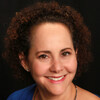Is medical supply room or pharmacy or detox rooms or dirty linens rooms to be included in this calculation?
You rely on LEEDuser. Can we rely on you?
LEEDuser is supported by our premium members, not by advertisers.
Add new comment
To post a comment, you need to register for a LEEDuser Basic membership (free) or login to your existing profile.



